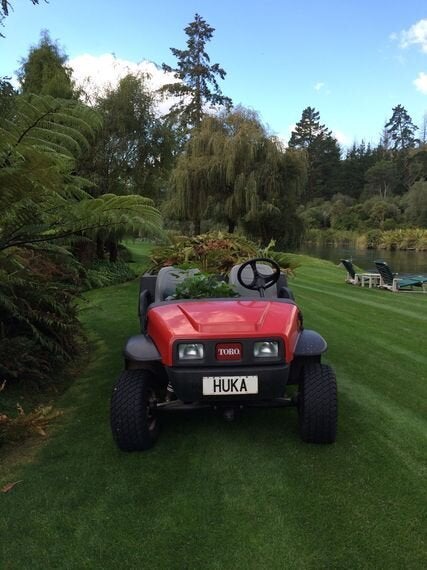
Huka Lodge Resort in Taupo, New Zealand
Close your eyes and imagine flying cross-country without ever having to pull out your ID or go through a security checkpoint. Enter your confirmation code at a kiosk, print out your boarding pass and go to the gate. Liquids are allowed and travel is back to a leisurely pace right at the start! That's the experience once you enter the world of the Kiwis.
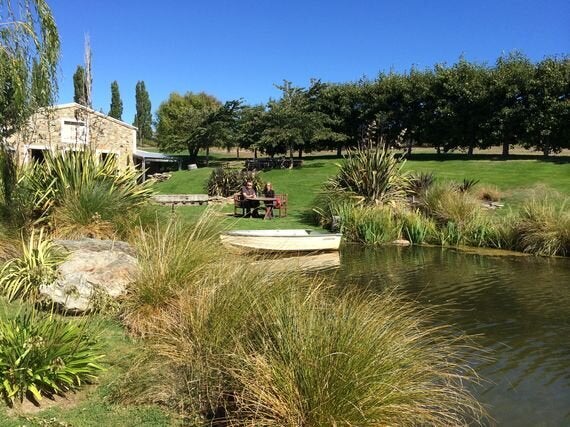
Lunch at Northburn Station, Central Otago
New Zealand gets it right when it comes to tourism. Activities are endless and accessible. Want to try trout fishing, jet boating, heli-skiing, glamping (glamour tramping), mountain biking or Bungee jumping? You can do just about any activity imaginable from down and dirty to the ultimate pampering experience. The more populated North Island and the wonders of the South Island offer beaches, forestry, fisheries, rivers, lakes, mountains, glaciers, vineyards and farms with more sheep and dairy cows than people! New Zealand has no snakes and is known for flightless birds. Of course everything is not perfect. The sandflies do bite.
I was fascinated by the history of the indigenous Māori tribes who migrated from the Hawaiian Islands. Like them, I ate berries off the trees, examined medicinal plants, discovered Tua Tua clams and tasted peppery herbs in the bush that one could never find in any supermarket. One evening, I ventured out to the river with a Māori guide to share leftover dinner scraps with the eels. Back in the rainforest, the silver ferns (New Zealand's quasi-national emblem) have leaves that look like sterling silver glistening in the sun. As I heard about the anti-bacterial properties of Manuka honey, I slathered it on a wound and spread it on my toast. I was soon using "Kiwi" words like long drop (a type of bathroom in the bush) and "Māori" words like kia-ora (hello).
To compliment the down to earth lifestyle, you'll find food is as fresh, organic and natural as it gets! Kiwis prefer simplicity and demand wholesomeness.
Veggies are not an afterthought in New Zealand. One local woman told me, "In my family most meals are lamb, beef or chicken with three veg". Cafe lunches include skillfully prepared frittatas served with a proper side salad of mixed greens, including slivers of carrots and cabbage. It's usual business for most stores and cafes to sell free-range eggs, which are laid by local chickens daily and are set right next to the cash register. You can trust that the term free-range is not used as a marketing ploy.
Being surrounded by the sea, there is never a shortage of fresh fish and I mean FRESH! I tried a variety of sustainable fish including farmed salmon and clams that were the tastiest I've ever eaten. The freshwater crayfish were as sweet as Maine lobsters. New Zealand has one of the world's most advanced systems for sustainable fisheries management. The result are prized safe and healthy seafood products.
As I perused the markets and health food stores whenever I passed a city or town, I noticed that coconut oil is popular. The Paleo diet and GMOs were topics in the news. One lodge manager said, "We get so many dietary requests. One evening the chef had to prepare a different menu for each guest. It ran the gamut from gluten-free, dairy-free, nut allergy, vegan and vegetarian. Yet, by day two, most guests had gone off their diets and were eating everything". I asked which nationality had requested most of the dietary restrictions and was told it was the Americans. "The British eat everything and the Australians are simple".
On my last day, as I walked towards the small, commercial commuter turboprop, which was departing to Auckland, I noticed it was manned by two pilots and no flight attendants. The pilot addressed the man boarding the plane in front of me as Prime Minister. I thought to myself, did I hear that right? How could the head of state fly economy class with regular people? Two girls behind me confirmed that Prime Minister John Key was seated just a few seats in front of us.
Here are a few of my favorite healthy body fuels in the land of the Hobbit:
1) It's autumn in New Zealand and harvest time for the sweet Feijoa fruit! The fruit is also known as a Pineapple Guava or a Guavasteen. You scoop out and eat the pulp of this green, fragrant, oval fruit. The Feijoa shrub is native to South America and is grown commercially in New Zealand. Feijoas are an excellent source of vitamin C.
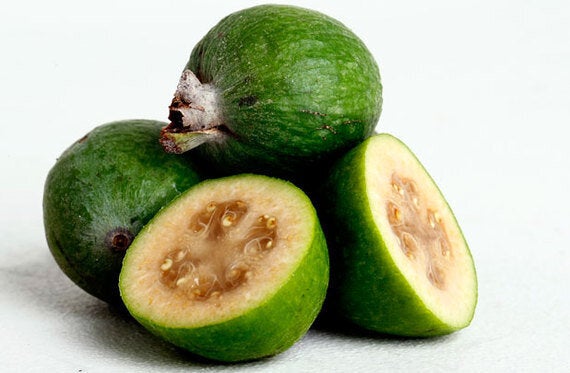
New Zealand Feijoa Fruit
2) Kumara is the New Zealand sweet potato and it comes in a few varieties-- red, gold and orange. The Maori settlers first introduced Kumara from the Pacific Islands. They were grown on the North Island and were tiny compared to the varieties harvested today. Kumara continue to be a staple of the Kiwi diet. Like most sweet potatoes, they are an excellent source of beta-carotene. By the way, Kumara is also the name of a town on the west coast of the South Island.
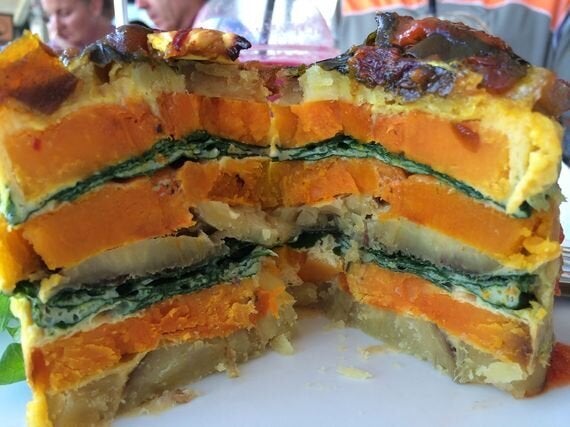
Kumara Frittata at Body Fuel Cafe, Taupo
3) From the surface, the Golden Kiwi looks like the typical kiwifruit until you cut open the brown skin to see and taste the difference. It's a recent cultivar that took many years to develop. The pulp is sweeter and softer than the green variety and if you look closely the skin is less fuzzy. Kiwis eat the skin of kiwifruit. Nutritionally, the green and golden kiwifruits are similar and offer a good dose of Vitamins C and E.
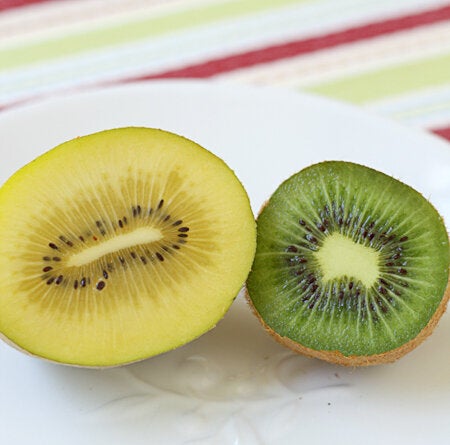
New Zealand Kiwifruits
4) New Zealand lamb is smaller than American lamb. It is grass-fed throughout its life, as opposed to being forced to eat grains. Its rich flavor is a result of the grass feeding. It is slaughtered at a young age, which makes it very tender. In New Zealand only animals under 12 months old and without incisors can be labeled "lamb," whereas in the U.S. there is no such age restriction in labeling. It was thrilling to see sheep and cows grazing naturally throughout the country--no factory-farming in New Zealand!

Sheep Grazing, South Island, New Zealand
5) Blue cod (Parapercis colias) also known as sand perch or its Māori names rawaru and pakirikiri are endemic to New Zealand. It's a non-oily fish with a flaky texture, considered one of the best fish for eating. While Kiwis do indulge in fish and chips (about once a week), they will favor shops that use blue cod as opposed to lower quality seafood varieties.
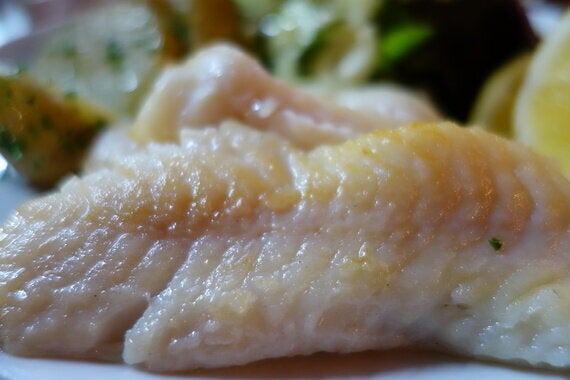
New Zealand Blue Cod at Fishbone Bar & Grill, Queenstown
6) Horopito is the native pepper tree found throughout the bush areas of New Zealand. In the Māori culture, the leaves are crushed and used to season food. If you choose to cook with a Māori chef, he/she will likely take you into the bush to forage for food.
7) Tuangi or tuaki is the local littleneck clam, which is also known as the New Zealand cockle. This species is found only in New Zealand. Although the shells are small, the clams inside are as fat and sweet as can be. There are many projects going on to harvest these clams sustainably in harbors and estuaries throughout the country.
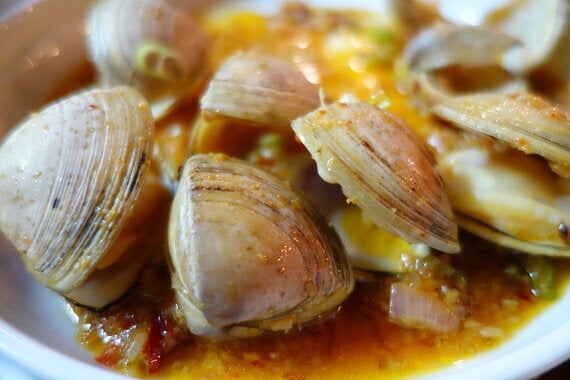
New Zealand Cockles at Fishbone Bar & Grill, Queenstown
Kiwi Trivia:
New Zealanders call themselves Kiwis, named after a flightless bird, which is native to, and the national symbol of, New Zealand.
The national sport in New Zealand is Rugby and the All Blacks are the world champions. Rugby was adopted because every boy---no matter his size or speed could play one of the diverse positions on a Rugby team.
Kiwifruit are Chinese gooseberries. They originated in China and the seeds were brought to New Zealand in the early 1900s. Today New Zealand is the second largest grower of kiwifruit.
And whatever you do, when you have a choice of breakfast spreads, choose Pic's peanut butter over Vegemite!
For more reading about lifestyles of the healthy and fit, pick up a copy of Beyond The Mediterranean Diet: European Secrets Of The Super-Healthy, Dec 2013, published by WorldRD.